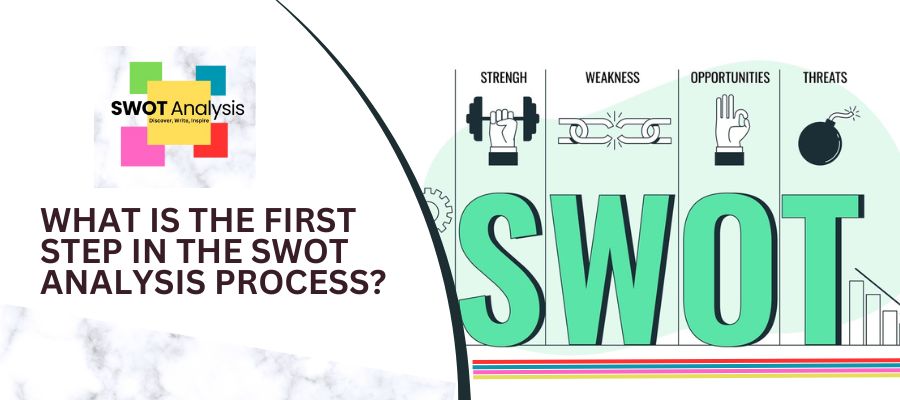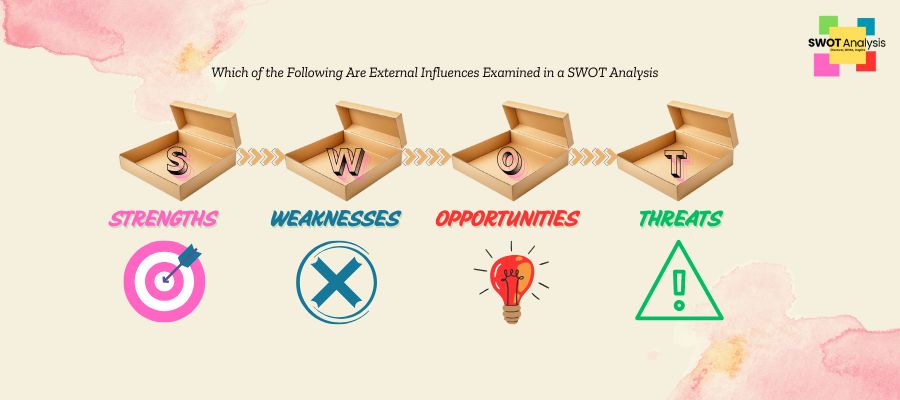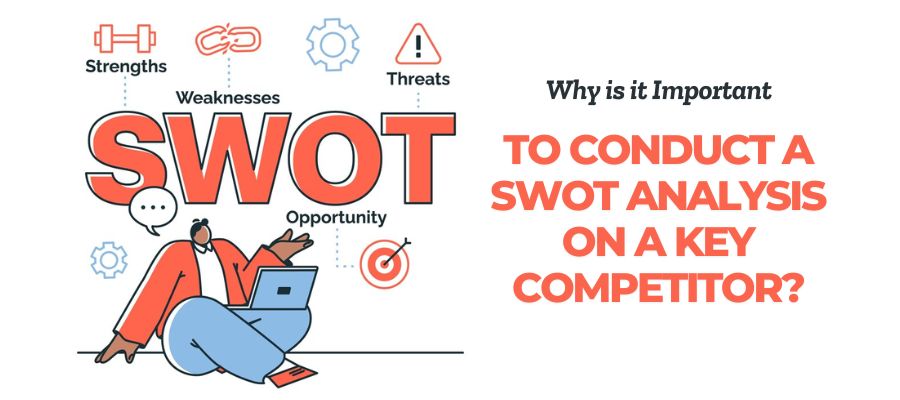SWOT analysis is a technique used to evaluate a company’s Strengths, Weaknesses, Opportunities, and Threats. This business tool helps organisations identify internal and external factors that impact their performance and make informed decisions. By following systematic steps, companies can create a synthesized view of their position within the industry and develop strategies to address areas of improvement.
Steps for Conducting a SWOT Analysis:
- Assemble a team of key stakeholders and staff members.
- Define the primary objective of the analysis.
- Brainstorm to identify internal strengths and weaknesses.
- Examine external opportunities and threats.
- Compile findings into a SWOT table for clarity.
Using SWOT analysis periodically ensures that organisations stay aligned with their long-term goals and adapt to changing market dynamics.
SWOT Analysis Example
Scenario:
A retail business is looking to expand its market presence.
Strengths:
- Strong brand recognition.
- Loyal customer base.
- Robust supply chain management.
Weaknesses:
- Limited online presence.
- High employee turnover.
- Outdated inventory system.
Opportunities:
- Growth opportunities in new markets.
- Emerging e-commerce trends.
- Partnerships with complementary brands.
Threats:
- Increasing competition from emerging competitors.
- Economic downturns affecting spending habits.
- Disruptions in the supply chain.
This SWOT analysis example demonstrates how organisations can identify key areas to focus on and develop actionable strategies.
A SWOT table presents the analysis in a structured format:
| Category | Internal Factors | External Factors |
|---|---|---|
| Strengths | Strong brand recognition, skilled staff | |
| Weaknesses | High turnover, limited online presence | |
| Opportunities | New markets, e-commerce growth | |
| Threats | Emerging competitors, economic downturns |
Organisations can use this framework to create a clear picture of their competitive position and plan accordingly.
How Do You Write a Good SWOT Analysis?
To write a good SWOT analysis, follow these steps:
- Define Objectives Clearly:
- Start by stating what you want to achieve.
- For example, improving profit margins or exploring market penetration.
- Gather Internal and External Data:
- Use various data sources, such as market research and employee feedback.
- Assess the organisation’s human resources, operational efficiency, and market trends.
- Brainstorm Collaboratively:
- Involve different staff members to provide diverse insights.
- Include stakeholders to align the analysis with organisational goals.
- Prioritise Key Findings:
- Identify areas of improvement and capitalize on growth opportunities.
- Refine and Review:
- Ensure the analysis is concise and actionable.
- Use your SWOT findings to develop strategies and adjust as necessary.
What is the First Step in the SWOT Analysis Process?
A. Explanation of the Initial Step: Defining the Objective
The first step in any SWOT analysis is to define its objective clearly. This could involve exploring potential growth opportunities, evaluating competitive advantage, or identifying ways to mitigate risks. Without a clear objective, the analysis may lack focus.
B. Importance of Clarity in Objectives for Effective Analysis
Clarity ensures that the team can:
- Align the analysis with the organisation’s vision and mission.
- Focus on relevant factors that impact decision-making.
- Avoid unnecessary distractions during the process.
C. Examples of Objectives That Can Guide the SWOT Analysis
- Market Expansion: Assess readiness to enter new markets.
- Operational Efficiency: Identify weaknesses to improve upon.
- Strategic Planning: Develop strategies for long-term sustainability.
Implementing the First Step
A. Techniques for Defining Clear Objectives
- Use SMART criteria: Ensure objectives are Specific, Measurable, Achievable, Relevant, and Time-bound.
- Conduct initial research to understand market dynamics and internal capabilities.
B. Involving Stakeholders in the Objective-Setting Process
- Invite input from many different staff members.
- Hold brainstorming sessions to gather diverse perspectives.
- Ensure that the objectives reflect organisational priorities.
C. Aligning Objectives with Organisational Goals
- Map each objective to long-term goals.
- Evaluate how achieving these objectives will impact the organisation’s overall performance.
Common Mistakes When Preparing SWOT Analysis
Avoid these pitfalls to ensure a successful SWOT analysis:
- Lack of Clear Objectives:
- Without focus, the analysis may result in irrelevant findings.
- Ignoring External Forces:
- Overlooking external factors like industry trends can lead to incomplete insights.
- Overgeneralization:
- Avoid vague descriptions. Be specific about strengths and weaknesses.
- Failing to Involve Stakeholders:
- Different staff members can contribute valuable perspectives.
- Not Updating the Analysis:
- SWOT analysis requires periodic updates to remain relevant.
Conclusion
SWOT analysis is a versatile planning technique that helps organisations tackle complex problems and seize opportunities. By evaluating internal and external factors, companies can make better decisions, align with industry trends, and achieve sustainable growth. Regularly conducting your SWOT analysis ensures the organisation remains agile and competitive.
FAQs
1. What are the stages of SWOT analysis?
The stages include defining objectives, gathering data, identifying the four components, and synthesizing findings into actionable insights.
2. What is the first step in the situation analysis process?
The first step is to define the objective clearly.
3. What is the rating scale in SWOT analysis?
A rating scale helps prioritise each component based on its impact.
4. What is a ranked SWOT analysis?
A ranked SWOT analysis organises factors by their level of importance or urgency.
5. Are the items under opportunities and threats external and not controllable?
Yes, opportunities and threats are external forces that businesses cannot control but must adapt to.
6. How do you get information about how outsiders perceive your strengths and weaknesses?
You can use market research, customer surveys, and external data sources to gather this information.
Also Read: Which of the Following Best Defines a SWOT Analysis?





